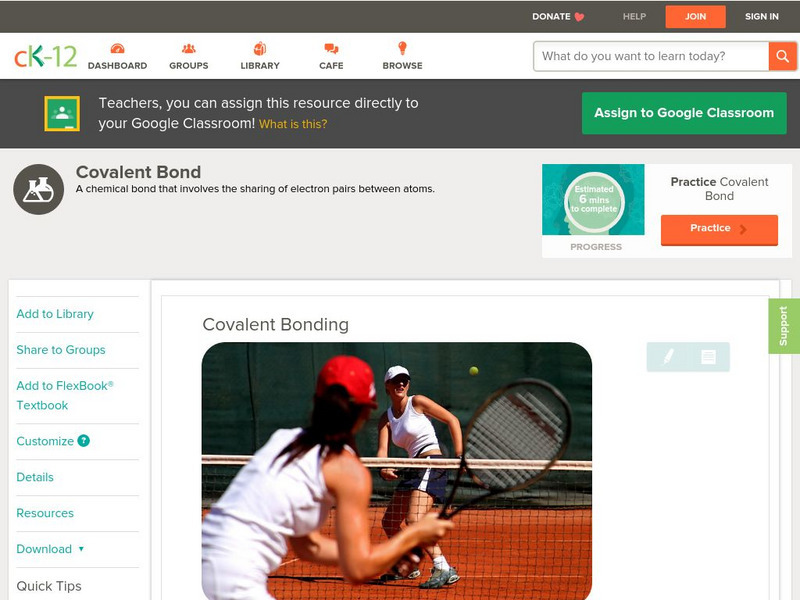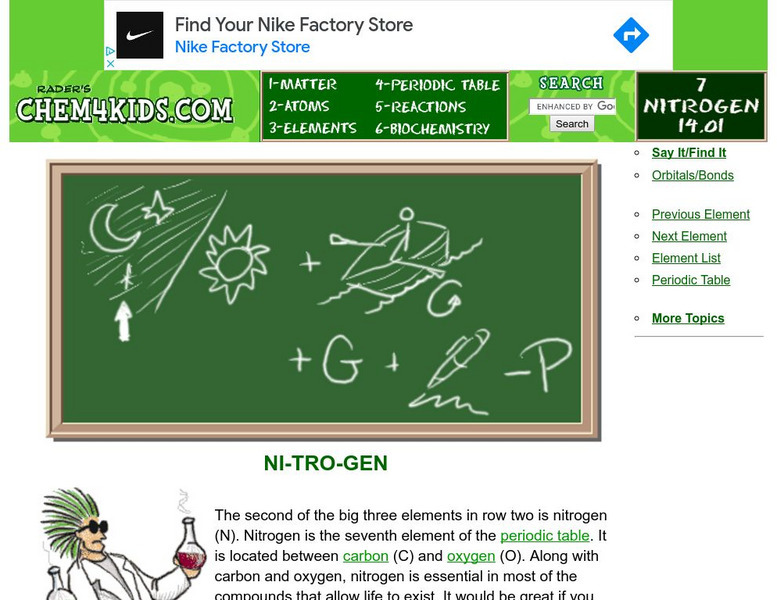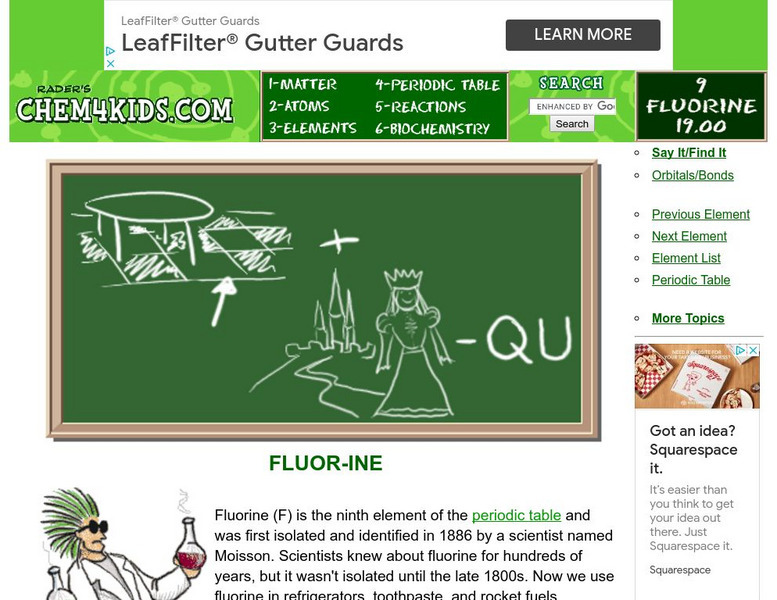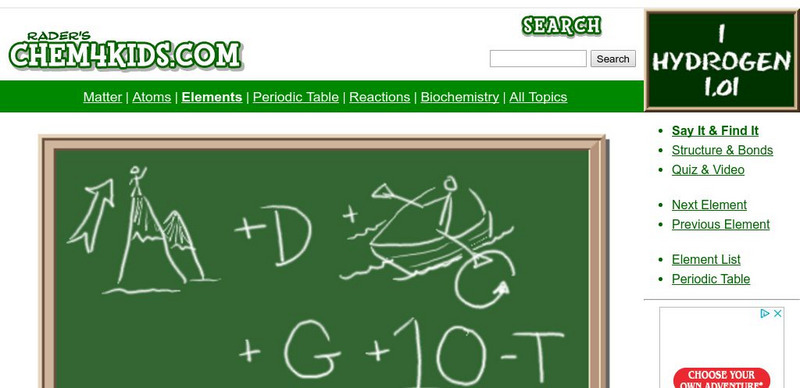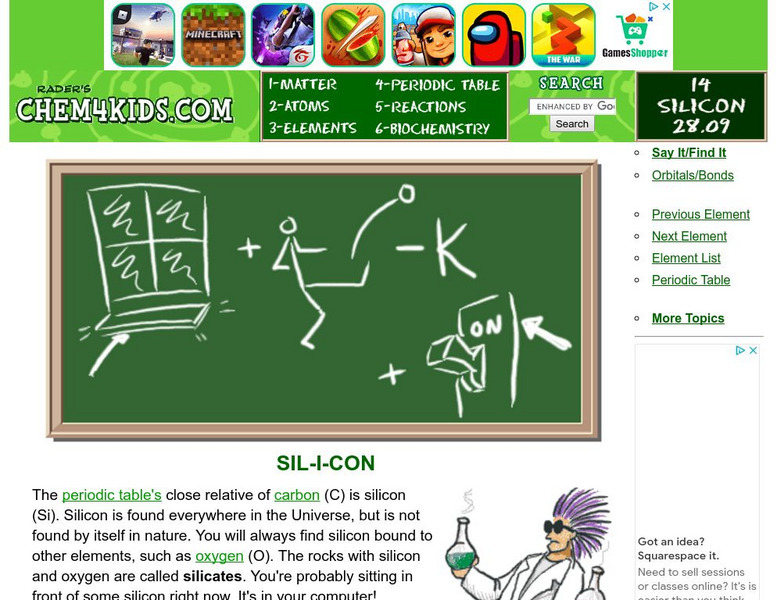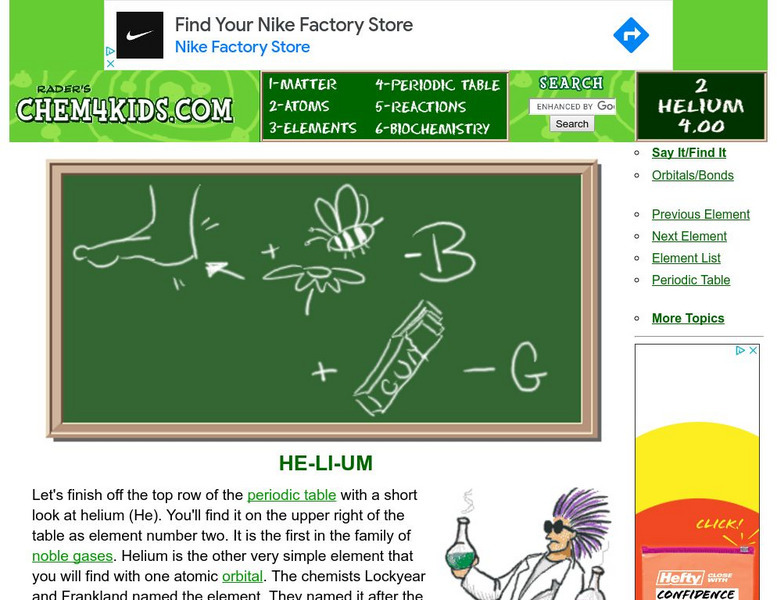CK-12 Foundation
Ck 12: Chemistry: Covalent Bonding
A learning module giving the definition of a covalent bond, the compounds and elements they make up and why they form. Module includes reading and review questions.
Michael Blaber, PhD
Fsu: Basic Concepts of Chemical Bonding: Polarity and Electronegativity
Florida State University provides an explanation of electronegativity of elements and its affect on bond type.
Upper Canada District School Board
Tom Stretton's Advanced Placement Chemistry: Chemical Bonding
Take on this self-guided advanced level e-text, and learn about chemical bonding and molecular structure.
Chem Tutor
Chem Tutor: Chemistry: Lewis Structures of the Elements
This colorful page goes over the proper techniques for writing Lewis structures for elements. This is a great place to begin learning how to write Lewis structures. When you are ready for a more advanced lesson, follow the link to learn...
State University of New York
State University of New York: Metallic Bonding: Band Theory
This simulation shows a simple band diagram for metals for Group 1A and 2A and the transition series. Each metal's valence orbitals combine to create a band that is responsible for the element's properties.
Ducksters
Ducksters: Chemistry for Kids: Chemical Bonding
Study chemical bonding in chemistry including atoms, valence electrons, ionic and covalent bonding, and how molecules are formed on this site!
Concord Consortium
Concord Consortium: Molecular Workbench: Strength of Intermetallic Bonds
View two different substances made from the same two elements. Observe the different strengths of bonds between the two different substances.
Chem4kids
Chem4 Kids: Atoms
This site provides a detailed overview of atoms. Content explores an atom's structure, as well as what ions are, how atoms bond, what compounds are (including how to name compounds), and what isotopes are.
Science Struck
Science Struck: Electronegativity Chart of Elements
Explains what electronegativity bonding is and presents a periodic table of elements that is color-coded to show electronegativity trends.
Clackamas Community College
Clackamas Community College: Chemical Bonding: Metals and Nonmetals
A chart of the periodic table of elements, including showing the nonmetal group.
Chem4kids
Chem4 Kids: Magnesium (Mg)
Here you can find some great information about the 12th element in the periodic table, "magnesium." Content focuses on magnesium's electrons, where you can find magnesium in nature and in the home, and how magnesium combines with other...
Chem4kids
Chem4 Kids: Nitrogen (N)
Here you can find some great information about the 7th element in the periodic table, "nitrogen." Content focuses on nitrogen's electrons, where you can find nitrogen in nature and in the home, and how nitrogen combines with other elements.
Chem4kids
Chem4 Kids: Fluorine
Here you can find some great information about the 9th element in the periodic table, "fluorine." Content focuses on fluorine's electrons, where you can find fluorine in nature and in the home, and how fluorine combines with other elements.
Chem4kids
Chem4 Kids: Neon (Ne)
Here you can find some great information about the 10th element in the periodic table, "neon." Content focuses on neon's electrons, where you can find neon in nature and in the home, and how neon combines with other elements.
Chem4kids
Chem4 Kids: Sodium (Na)
Here at Chem4Kids you can find some great information about the 11th element in the periodic table, "sodium." Content focuses on sodium's electrons, where you can find sodium in nature and in the home, and how sodium combines with other...
Chem4kids
Chem4 Kids: Sulfur (S)
Here you can find some great information about the 16th element in the periodic table, "sulfur." Content focuses on sulfur's electrons, where you can find sulfur in nature and in the home, and how sulfur combines with other elements.
Chem4kids
Chem4 Kids: Hydrogen
Here you can find out about hydrogen, the first element in the periodic table. Content includes shell information, where to find it in nature, and why it is helpful to us.
Chem4kids
Chem4 Kids: Carbon
Click on the left navigation terms for some great information about the 6th element in the periodic table, "carbon." Content focuses on carbon's electrons, where you can find carbon in nature and in the home, and how carbon combines with...
Chem4kids
Chem4 Kids: Silicon (Si)
Here you can find some great information about the 14th element in the periodic table, "silicon." Content focuses on silicon's electrons, where you can find silicon in nature and in the home, and how silicon combines with other elements.
Chem4kids
Chem4 Kids: Argon (Ar)
Chem4Kids looks at the 18th element in the periodic table, argon. Content focuses on argon's electrons, where you can find argon in nature and in the home, and how argon combines with other elements.
Chem4kids
Chem4 Kids: Helium
Here you can find lots of great information about helium. Learn about its electrons, where it exists in nature, and about the element itself!
Chem4kids
Chem4 Kids: Chlorine (Cl)
The 17th element in the periodic table is defined, chlorine. Find out how many electrons chlorine has and where you can find it in nature and in the home.
Chem4kids
Chem4 Kids: Phosphorus (P)
Here you can find some great information about the 15th element in the periodic table, "phosphorus." Content focuses on phosphorus' electrons, where you can find phosphorus in nature and in the home, and how phosphorus combines with...
Sophia Learning
Sophia: Chemical Reactions: Lesson 4
This lesson will present a basic understanding of the periodic chart of elements and how to predict chemical reactions based on given information. It is 4 of 9 in the series titled "Chemical Reactions."


